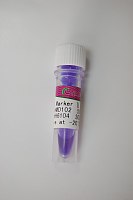19 Amplification and Sequencing of Mitochondrial DNA in Forensic Casework
互联网
529
Mitochondrial DNA (mtDNA) typing is increasingly used for the forensic identification of human remains (1 -9 ). This is especially true when only limited quantities of sample are present, such as when the sample has undergone extensive degradation and nuclear-typing methods are ineffectual. One characteristic of mtDNA responsible for the increasing reliance is the high copy number of mtDNA per cell, with mtDNA existing in hundreds if not thousands of copies per cell (10 -12 ). The discriminatory power of mtDNA testing arises from the polymorphic nature (between unrelated individuals) of the two hypervariable regions (HV1 and HV2) located within the D-loop of the mtDNA genome (13 -16 ). The haploid, maternal inheritance patterns of mtDNA transmission between generations, allow an inclusion or exclusion to be made when the sample sequence is compared to that of a maternal reference. Related individuals will share similar polymorphisms relative to a consensus standard (17 ).






